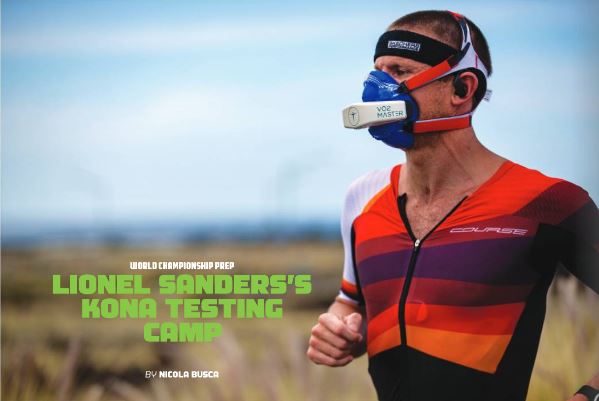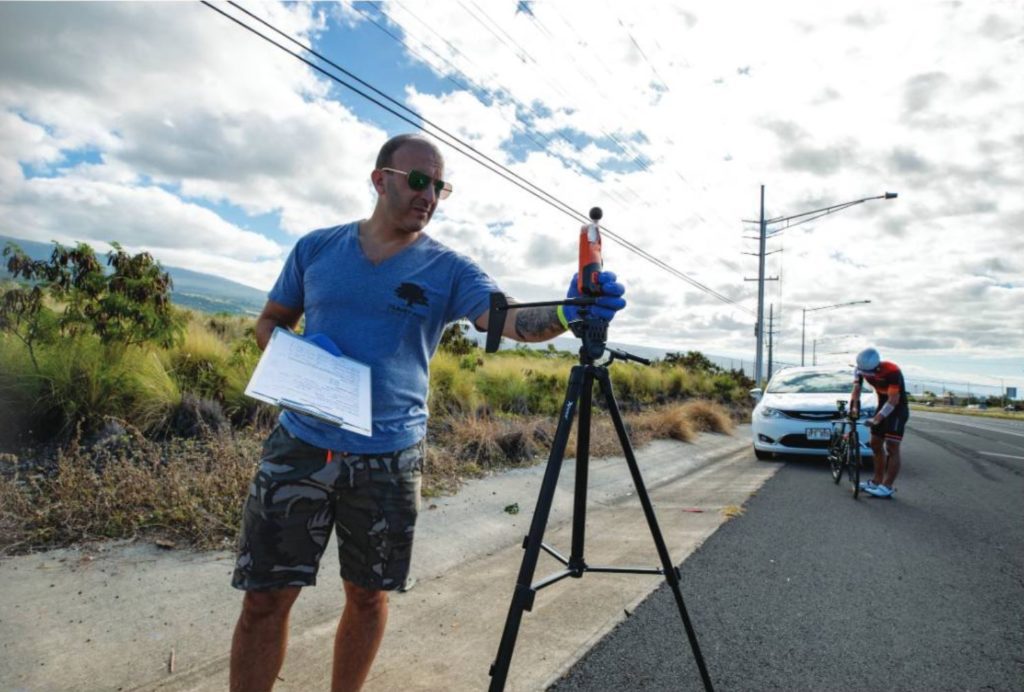Sanders’ February testing camp looking really good right now
A February testing camp in Kona should provide some valuable insight on how Lionel Sanders can best prepare for the next Ironman World Championship.
 Photo by:
Talbot Cox
Photo by:
Talbot Cox
When Lionel Sanders and his coach David Tilbury-Davis did a training camp in Kona in February, some suggested that the conditions wouldn’t be close enough to what he might experience during a race on the Big Island in October. Now that the Ironman World Championship is scheduled for next February, Tilbury-Davis and Sanders are armed with some very useful information on how the Canadian pro can best prepare.
Few triathletes inspire the collective imagination like Lionel Sanders. To wit: the three videos he just released from a testing camp in Kona have not gone unnoticed (and averaged more than 50,000 views each in a few weeks). Even though a lot of people are fascinated and inspired by Sanders’ strengths in communication and his openness about his data, some have argued that going to Kona now is too early, and the conditions are too different, than in October. But is that so?
“We’d always planned to go and do a training camp in Kona just to do some testing in that environment, and it just transpired that the best time within the season was to do it in February,” said David Tilbury-Davis, Sanders’ current coach and the man who, in 2017, guided Sanders to his best result (second) at the Ironman World Championship. “We also looked at few dates in the middle of the season, but then it would have overlapped with races that Lionel wants to do, and it wouldn’t be sensible to do it then.”
Tilbury-Davis also feels that the weather conditions they found in Kona are not the same that they will face in October. Yet he also points out that “you’re still in the same location with reasonably hot temperatures, reasonably high humidity and reasonably high UV. And you can’t really replicate that anywhere else. Then you throw in the psychological benefit of being out on the course, riding at a certain power, running at a certain pace, and taking some learnings away from that. I think that’s just powerful.”
Over the week they spent in Kona — Sanders’ wife Erin and videographer/ photographer Talbot Cox were also on the island — they performed sweat, lactate and aerodynamic tests, lactate testing, and even a test with the oxygen mask to understand his oxygen utilization. It was an approach, especially the sweat and lactate testing, that differed from the first time they worked together in 2017. “The carrots and peas on the plate may differ, but the meat and potatoes (of training) is no different,” Tilbury-Davis says.
At the same time, as for what he thinks would be the most important factor to work on with Sanders this season, Tilbury-Davis says that “it’s multifactorial and I don’t think it is something that he doesn’t already know. I think the biggest piece of the puzzle is just creating a better capacity for him to express the cardiovascular potential that he has. We’re trying to make him more hydrodynamic and improve his power production in the water, to optimize his efficiency and the aerodynamics on the bike and optimize his capacity to maintain, as he even puts it, a fairly slow pace on the run.”

But breaking down all the possible areas where Sanders can improve does not necessarily mean reinventing the wheel or overcomplicating things.
“I think lots of triathletes want to disappear down the rabbit hole of data and information,” says Tilbury-Davis. “But with more information comes more complexity and as such a higher demand for context. And simply, the more information analysis you do, the more you can ask better questions pertaining to the process in pursuit of the outcome. But you need to know how to interpret that data, not only to collect all of it. You need to be comfortable throwing some of it out if there is no value add.”
In this respect, Tilbury-Davis’ training philosophy and methodology are loyal to an idea coined by Mark Verstegen, Director of Performance for the NFL Players Association, who believes that the essential thing in sports is “doing the simple things savagely well.” It is an idea that applies to both Sanders’ physiology and biomechanics (Tilbury-Davis has done a post-grad in biomechanics).
“You can’t make somebody do a movement pattern that they are physically incapable of doing,” he says. “I cannot make Lionel look like Patrick Lange when he runs. That would be a recipe for injury. But what I can do is optimize Lionel’s running so he can maintain a good posture for a longer period of time and have slightly better thoracic rotation and little things like that. They are very subtle things.”
Related: Lionel Sanders heads to Kona for testing with his coach
Tilbury-Davis also points out that Sanders has a history of running sub 1:10 off the bike in 70.3, and he doesn’t lack a running pedigree.
“He’s run like that since he was a kid, and there’s always been an asymmetry in his running,” he says. “There’s plenty of great runners with asymmetry in their running: Paula Radcliffe with head movement, Haile Gebrselassie with his asymmetric arm carriage because he was used to running to school every day with his books in his arm. You don’t fix something that is hard-wired in a person’s body.”
Sanders and Tilbury-Davis started to work together again last fall, two years after their first coach relationship ended. As happened in that first inception, Tilbury-Davis’ role is providing the structure and the framework of the training, but he does not write down the specific sessions. As he describes it, he delivers the colouring book, but then it’s Sanders who colours the pages and decides on the single session (with further feedback from Tilbury-Davis). Their coach-athlete relationship is also set up as an open discussion, where Sanders is involved and where he still engages and learns from it. In other words, it’s not a “dictatorship.”
“I’ve evolved as a coach, and he has evolved as an athlete,” he says. “There is some advice that I give him that I wasn’t talking about in 2017, but the majority of our working relationship is the same. The communication is a lot better, more frank and more honest. After Kona (2017) we both had different views about the situation and it kind of blew up in our faces and we were both stubborn, but we talked about it a few weeks later and there were no hard feelings.”
And even if the race season hasn’t started yet, Tilbury-Davis already has some expectations of their work together. He’s sure of one thing.
“I would be disappointed in myself if Lionel’s performances this year do not exceed his capacity and ability in 2017,” he says. “What I’m ultimately working toward is creating the ultimate version of Lionel. Whether that would result in him winning Kona, I don’t know. But I’m sure we haven’t seen the best Lionel yet.”
Nicola Busca is a freelance journalist based in London, England. This story originally appeared in the May, 2020 issue of Triathlon Magazine Canada.
